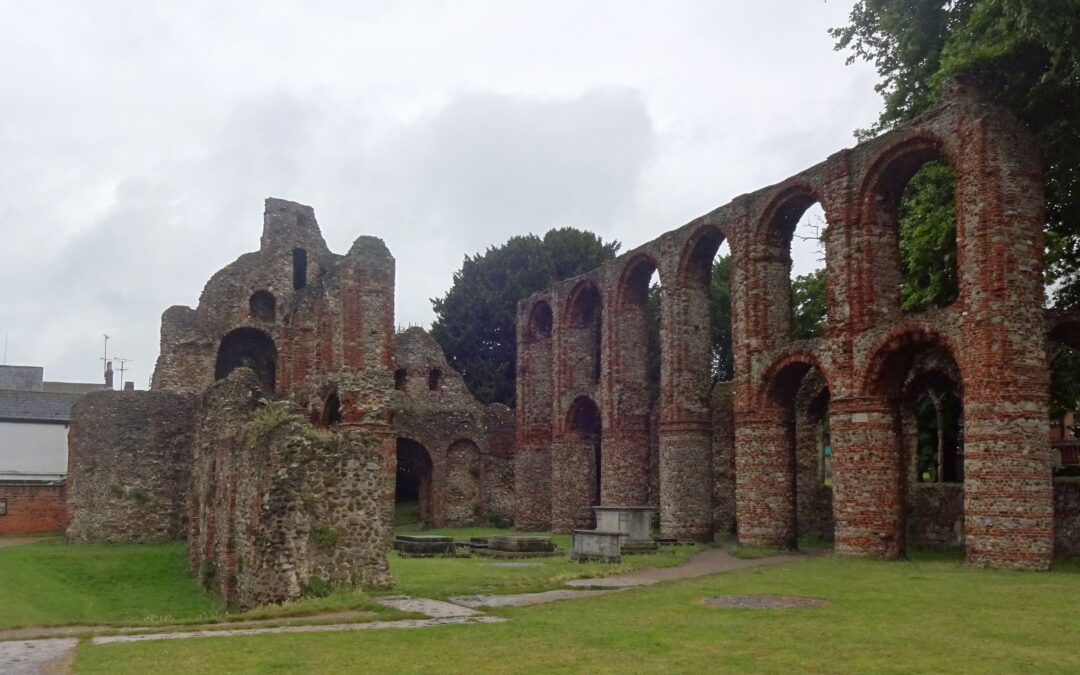By Joe Chick
Take a walk around the historic sites of Colchester in Essex with the aid of the Victoria County History’s ‘A History of English Places’ App.
Welcome to the second of several posts exploring the use of the Victoria County History‘s (VCH), ‘A History of English Places’ app. On this second walk, I explore the historic sites of Colchester.
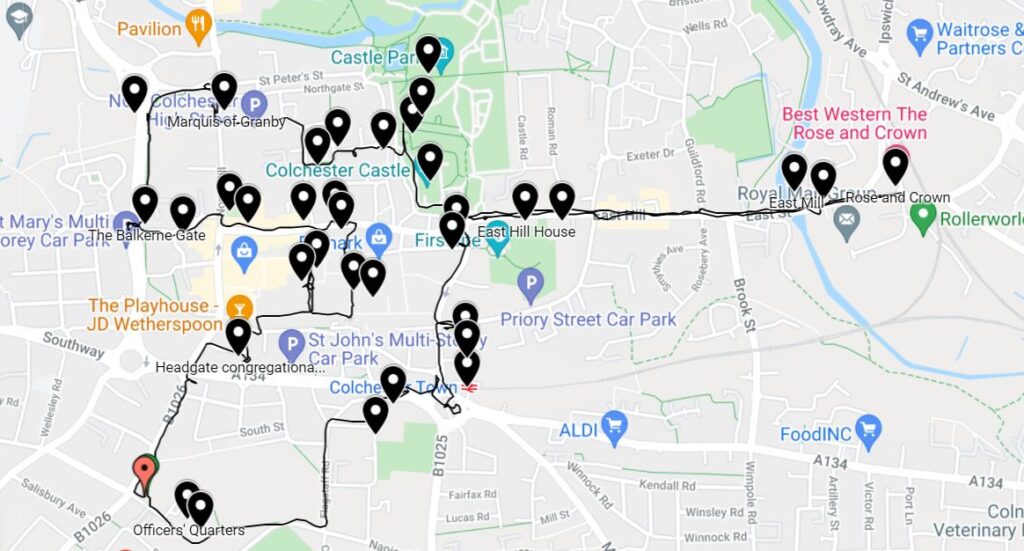
The route of Joe’s walk around Colchester
The app gives us an insight into the interests of the 19th-century cartographers who produced the first edition Ordnance Survey. Contemporary military buildings and railway stations are displayed much more boldly than historic buildings from Colchester’s 2,000 year history.
Like Kenilworth, Colchester has both a castle and an abbey. In Colchester, however, the town predates both. It was a significant Roman settlement. The town declined in importance relative to Great Yarmouth and Ipswich in the early medieval era but enjoyed a 14th- and 15h-century revival through the wealth of cloth merchants. It was a centre of Reformation-era religious conflict and the town was regarded as intensely Protestant by Elizabeth I’s reign. It was besieged during the Civil War in 1648. With many additions in the Industrial Revolution, the town today has visible remains spanning its two-thousand-year history.
South and East Colchester
At Butt Road car park, the App shows the Royal Artillery Barracks. Built in the 1860s and accommodating 10,000 troops, next to the Officers’ Quarters are the starting gates of the Roman Circus, the one site on this walk discovered too recently (in 2005) to appear in the Victoria County History. Chariot races would have begun from this point, the only known site for this in Roman Britain.
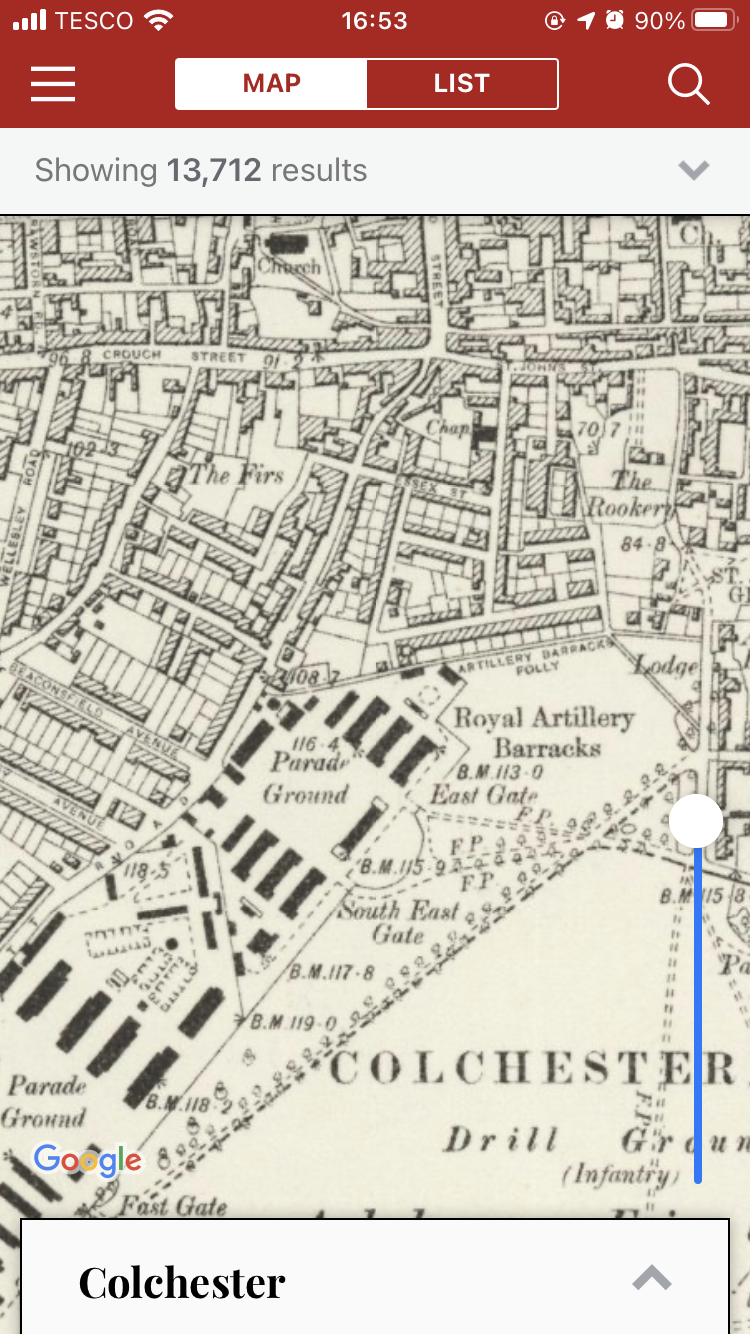
To the south of Colchester’s Roman walls lie a pair of monastic foundations. A 15th-century gatehouse is the only survivor of the Benedictine abbey of St John. In Henry VIII’s reign, the abbot was one of three to be executed for refusing to surrender his abbey. After passing the 12th-century church of St Giles and St Botolph’s Station (1866), I reached the ruins of St Botolph’s priory. This was probably the first Augustinian priory in Britain.
After the Dissolution, St Botolph’s was a parish church. Damaged during the 1648 siege, a new church was completed in 1837. In the intervening centuries, the parishioners attended the neighbouring All Saints’ church, now the town’s Natural History Museum. Opposite the church is the Colchester Club, a venue from the mid-18th century for affluent businessmen.
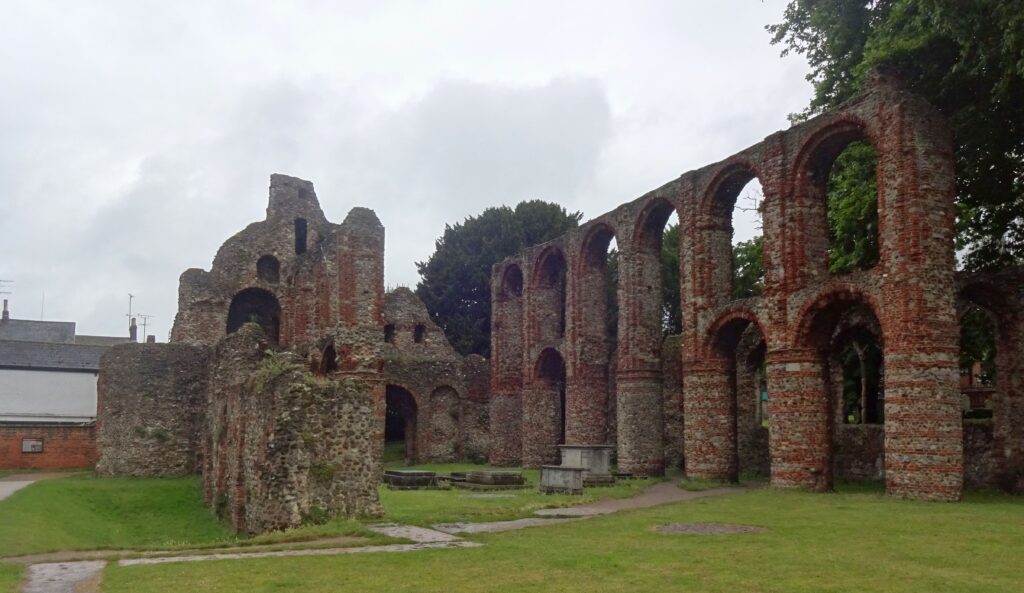
St Botolph’s Priory church ruins, Colchester
For a shorter walk, you can head straight into Castle Park, The road has a number of large town houses, such as East Hill House that was held by the Round family that sat in parliament on numerous occasions. Passing St James’ church, then over the river Colne, I reached East Mill. This was modernised in the 19th-century, pioneering the use of steam power in the town. Beyond are a pair of medieval buildings: Siege House (early 16th century) and the Rose and Crown inn (15th century).
Colchester Town Centre
If you return to town centre I found the largest Norman keep in England. Colcheester Castle was built in c.1076 for William the Conqueror. Now known to be on the site of a Roman temple, the construction reuses Roman tile and was once taller. The park has a summerhouse of 1731, mimicking a Greek temple, along with a pavement from a Roman house. A particularly intact stretch of the town wall, dating from the late third century, runs through the park.
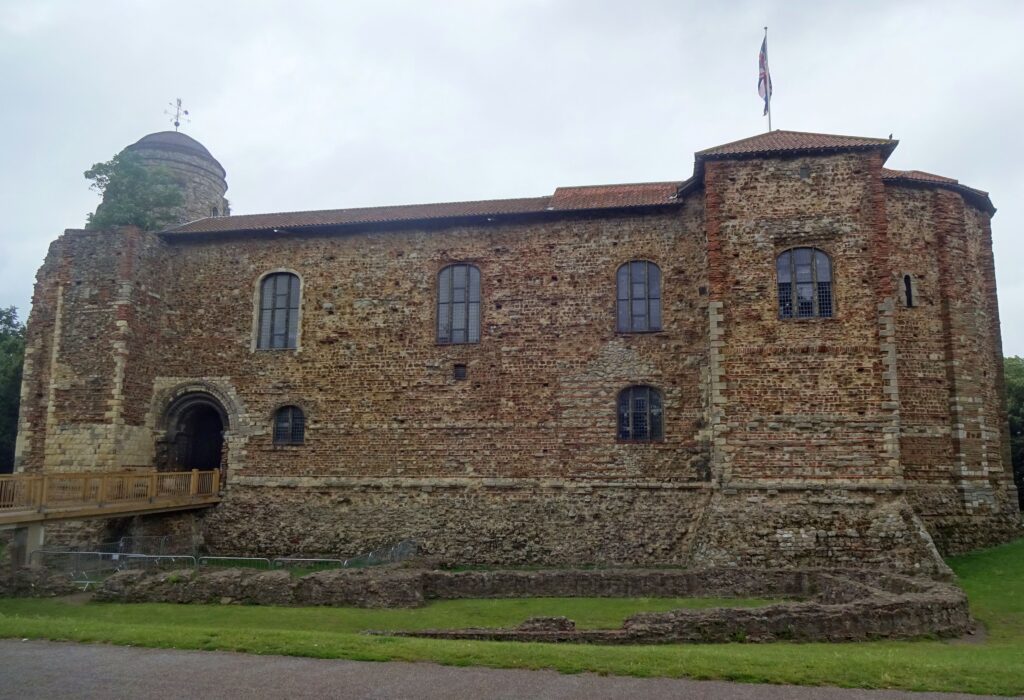
The Keep of Colchester Castle
To the west of the park lies St Helen’s chapel, which belonged to St John’s abbey, probably built in the twelfth century or earlier. In the 19th-century, there was a strong nonconformist presence in Colchester. Several places of worship survive. The Stockwell Congregational chapel was built in 1816–17 after dissention within an existing congregation culminated in a faction led by a certain Joseph Herrick splitting. Passing the early 12th-century St Martin’s church and the Marquis of Granby inn (c.1520), I walked along the outside of the town walls.
On the western town walls lies the Balkerne Gate, the most intact Roman gateway in England. The gate went out of use in the 4th century. Then, the defensive ditch around the town was extended. The gate was blocked in the late Roman or early medieval period by a stronghold popularly called ‘King Coel’s castle’. Dominating the Roman gate is ‘Jumbo’, the water tower built in 1882–83 to increase the town’s water supply. After passing the 15th-century St Peter’s church, I found the Albert Hall, built in 1845 as an additional corn exchange. The High Street also has the 1898 town hall, the 1905 Hippodrome Theatre, and the c.1470 Red Lion Inn. Originally a residence, the Red Lion became an inn during the sixteenth century, when it was known as the New Inn.
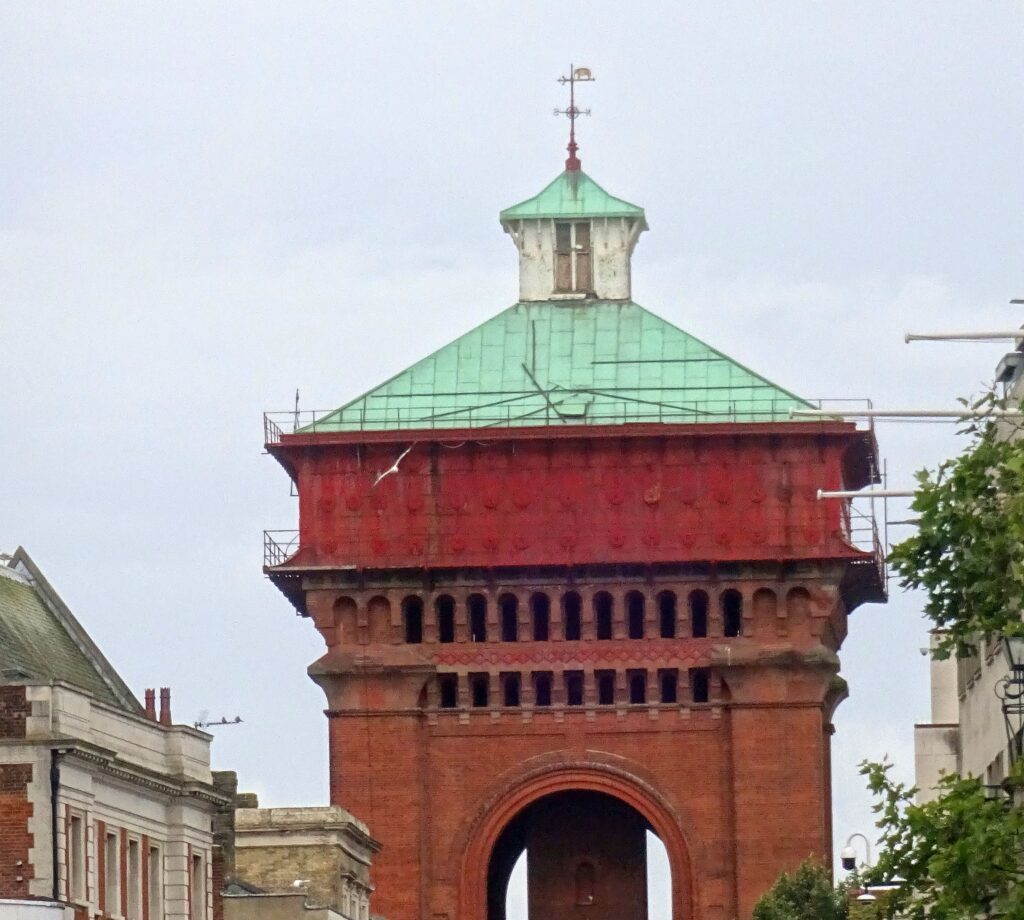
‘Jumbo’, Colchester’s distinctive water tower
On Lion Walk is another congregational church, attended by some of Colchester’s more influential inhabitants. Dating from 1863, the spire had to be rebuilt after suffering serious damage in an earthquake in 1884. Close by is a Baptist church of 1834. The final parish church I visited was Holy Trinity, with a pre-Conquest west tower built from Roman brick. Down a nearby alley is Tymperleys, a tearoom in a well-preserved 15th- and 16th-century house. Returning to the start of the walk, I passed the Headgate congregational church, built in 1844.
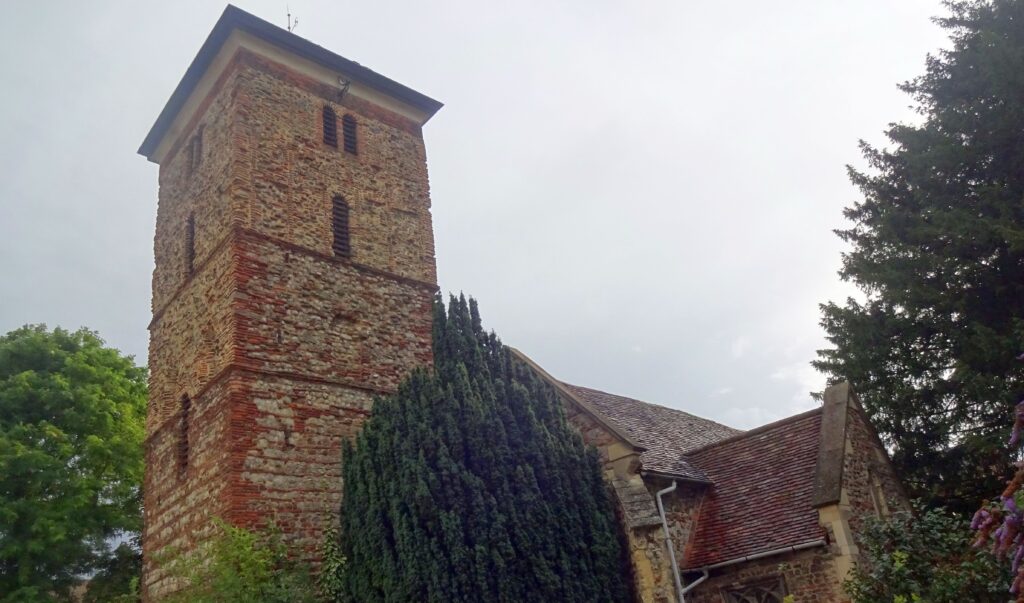
Holy Trinity Church, Colchester
Colchester retains historic buildings from its two-thousand-year history. It stands in stark contrast to popular impressions of Coventry, widely associated with the destruction of the Second World War.
Yet much more pre-modern history survives in Coventry than many people think, to be uncovered through the A History of English Places app next week!
Dr Joe Chick studies English monastic towns and teaches medieval and early modern history at the University of Warwick. Joe currently holds a research internship with the IHR Centre for the History of People, Place and Community.
Get ‘A History of English Places’
The app allows you to see this history and the layered archaeology of the landscape in front of you with fresh eyes and the convenience of the modern world. Why not try it today? Download it here.

